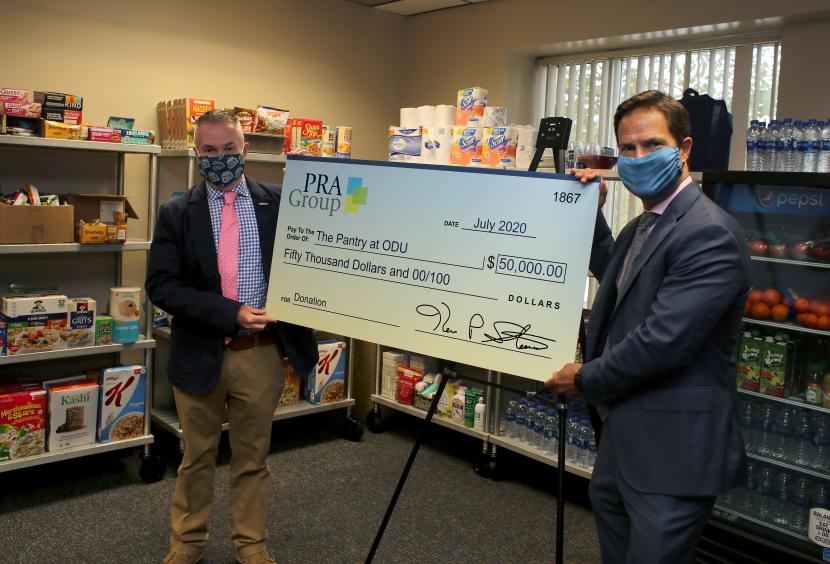"Sometimes we eat because we are hungry, but usually it's because we are bored, lonely or frustrated," Tracy Conder said.
By Harry Minium
Millions of Americans forced from their workplaces during the pandemic have discovered a hidden risk from working from home offices - ever-expanding waistlines
The Wall Street Journal recently reported that clothes manufacturers are seeing an uptick in the sizes people are ordering online. Fox Business News reports that 76% of Americans say they are gaining weight during the pandemic.
The so-called "Freshman 15," the term for pounds students are expected to gain during their first year in college, has led to #COVID15 trending on Twitter.
And it could be quite a while before many people return to their workplaces. Google, for instance, has told employees to stay home until at least mid-2021.
Tracy Conder, Old Dominion University's campus dietitian, said part of the problem is that many of us are working just steps from our refrigerators.
"The good news is that we have access to our kitchen," she said. "And the bad news is that we have access to our kitchen."
Having your kitchen that close - and the temptation it can cause - is much different than working in an office, where you might bring lunch or walk to a nearby restaurant. It's also likely that you got more exercise by walking to meetings that are now held online.
We often eat to comfort ourselves, Conder said, and that's especially true in times of stress.
"Sometimes we eat because we are hungry, but usually it's because we are bored, lonely or frustrated," she said.
Conder provided simple tips that may make it easier to avoid overeating.
First, aim for a consistent meal schedule. Eat at least two hours within waking. Then eat a meal or snack every three or four hours until two hours before bedtime.
Eating smaller meals and snacks consistently fuels your body and helps prevent hunger pangs.
If you miss a snack and find yourself overeating, try setting an alarm to remind you of snack time.
Try to include protein, grain, fruit and vegetables at every meal and stay hydrated. Most of us do not drink enough water, which can help control hunger and with weight loss.
"I suggest drinking two cups of water when you wake up, two cups with each meal and snack, two cups before, during and after a workout and two cups before going to bed," she said.
A 16-ounce glass or water bottle contains two cups.
It's also a good idea to have a change of scenery. Eat on your porch or kitchen table. At least put your work aside and put down a placemat if you eat at your desk.
While you're eating, focus on what's on your plate, not your cell phone or laptop.
"Sometimes we are distracted while eating, so we don't properly notice the food," Conder said. "That can leave us wanting more food.
"When we utilize all of our senses -sight, sound, taste, touch and smell - the enjoyment of our food increases and we are more satisfied with what we eat."
If you still find yourself reaching for that extra food, Conder recommends ranking your hunger from 1-10 on a piece of paper, with 10 being starving and one being totally satiated. Eat only if you are at level six or seven.
Or you can try making a list of 10 things that are not food-related and are more fun than eating. Don't put things on the list like waxing the car or cutting the grass.
"Place things on your list that aren't chores, like reading a book for going for a walk," she said. "Now put that list in an easy place for you to look at the next time you want to eat when you know you aren't hungry."
Choose one item on the list and do it for at least 10 minutes. If you're still hungry, complete the item for 10 more minutes.
"If after 20 minutes you still want the food, go eat a small serving, enough to satisfy the craving without overdoing it," she said.
If you need advice on how to eat balanced meals, she recommends www.chosemyplate.gov. It has an interactive food list sorted by good groups.
"Stick to the list and avoid food shopping while you're hungry," she said. "That way you can be a good gatekeeper for what food makes it into your shopping cart, and then into your home."







